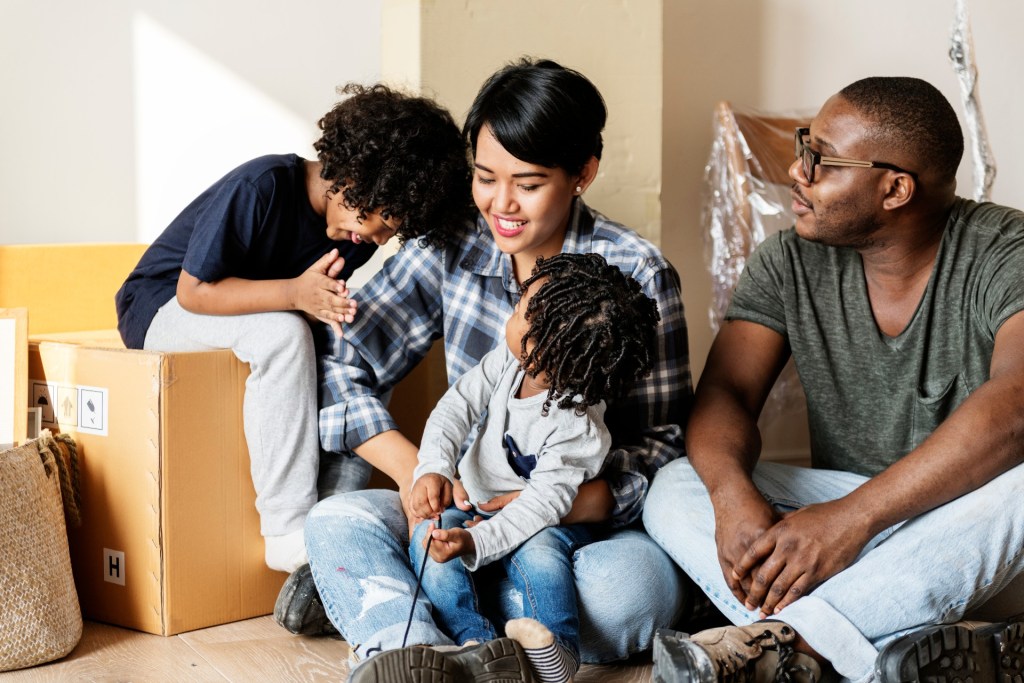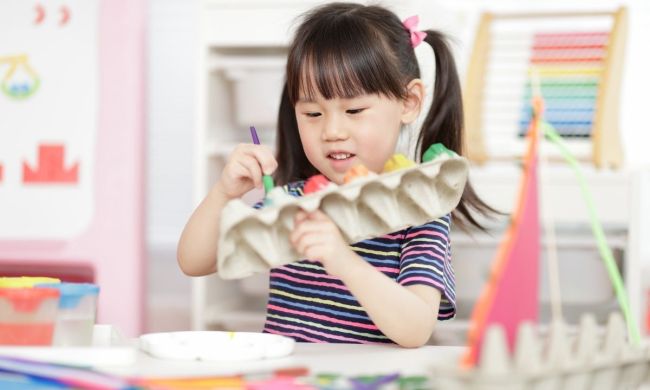Moving — whether it be across town, across the state, or across the country — can be an extremely exciting and equally stressful time in some families’ lives. The reasons for moving vary greatly and from family to family, but some of the most common ones are:
- Relocating for work
- Serving in the military
- Up or downsizing either size or financially
- School district enrollment
- A change in marital status
If the idea of moving any great distance away from your current home seems daunting to you, imagining how our children must feel when blindsided by the idea of moving shouldn’t be too far off base. Leaving behind friends, family, teachers, and classmates can feel overwhelming and devastating to our littles, so it is important to keep a line of open communication with them about this process. This helps keep them informed and somewhat in control — if only by illusion.

Make a plan
A great way to level with your kids about moving away from home and into a new town is to create a game plan for the move — together as a family. Sitting down and planning out things as a family unit helps build trust and respect of other’s thoughts and feelings. It also gives your kids a sense of control and input into the decision-making process. This kind of planning can be adjusted from family to family, depending on your children’s age. Keeping them informed about what is happening can also help elevate some of their anxieties and give them a sense of order.
Hit the streets
If you can visit your new hometown with your children before your actual move-in date, this could help them start to visualize themselves in that environment. Visiting the home — prior to move-in, so they keep an open mind and are able to see it with without the added pressure — can also guide their feelings in a more positive way.
If the move is a cross-country trek or is otherwise not feasible, another option would be to hold a “virtual tour” of your new town. During this “tour,” you can visit the following locations’ websites and social-media sites with your kids, giving them a visual guide. A few suggestions to showcase are:
- Your child’s new school(s)
- Interesting historical or cultural sites you can visit
- Their favorite fast food or chain restaurant for comforts of home
- New and interesting places to shop and eat together
- Any parks, movie theaters, or other entertainment spots or hangouts
Get creative
To help ease some of the anxiety and tension around moving away, consider allowing your child some creativity with their new room’s setup. By doing this, you’re giving them something to look forward to when arriving at their new home. This can be as simple as them selecting a new wall color for their room, picking out new decor or bedding, or choosing new furniture such as an upgrade to a “big-kid bed.”
If your child is particularly artistic or creative, giving them their very own space to create a mural, sketch, or other form of art or ode to their new adventure could help them form a deeper connection with their new environment, as well.
Go out in style
When the time of your move starts to draw near, your family may decide to throw some sort of going-away party to celebrate your departure, as well as to see as many friends and family as possible before leaving. Sticking with the theme of open communication, informing your children of this party and using their ideas and input in planning the event will help them come to terms with the move and also gives them one last chance to enjoy their time spent with loved ones. It can be as small or large as you’d like, and as formal or informal, as well.
Choosing a theme for the party is a fun way to lighten the sad occasion of a move. A few ideas for going-away party themes are:
- Grow where you are planted/transplanted
- Oh, the places you will go/Dr. Seuss
- Bon voyage/lifting anchor
- Photography/memory making
- The future is bright
Being honest and open with your children about an impending move is the best advice we can give to any parent. Experiencing life’s tough choices and hard life events are what builds and bonds relationships in families. Understand that shifting your child’s life almost entirely will cause them to feel tension, stress, anger, and frustration. Our kids are human and so innocently imperfect. In addition to understanding, showing your children grace is equally important, as this allows them to really feel their emotions and process them in a safe way.
By implementing some of our suggestions into your move plan, we hope to lighten the mood, elevate your family’s communication and openness, and provide fun and energizing ways to highlight, rather than dread, one of life’s most exciting events.




